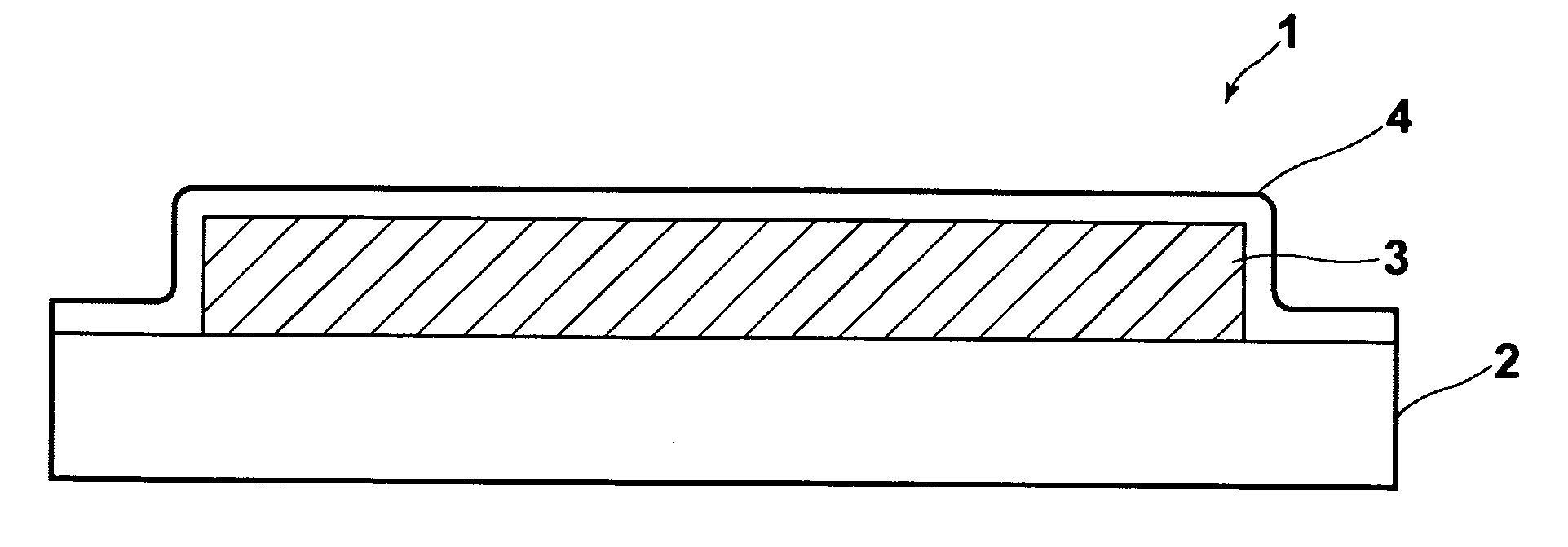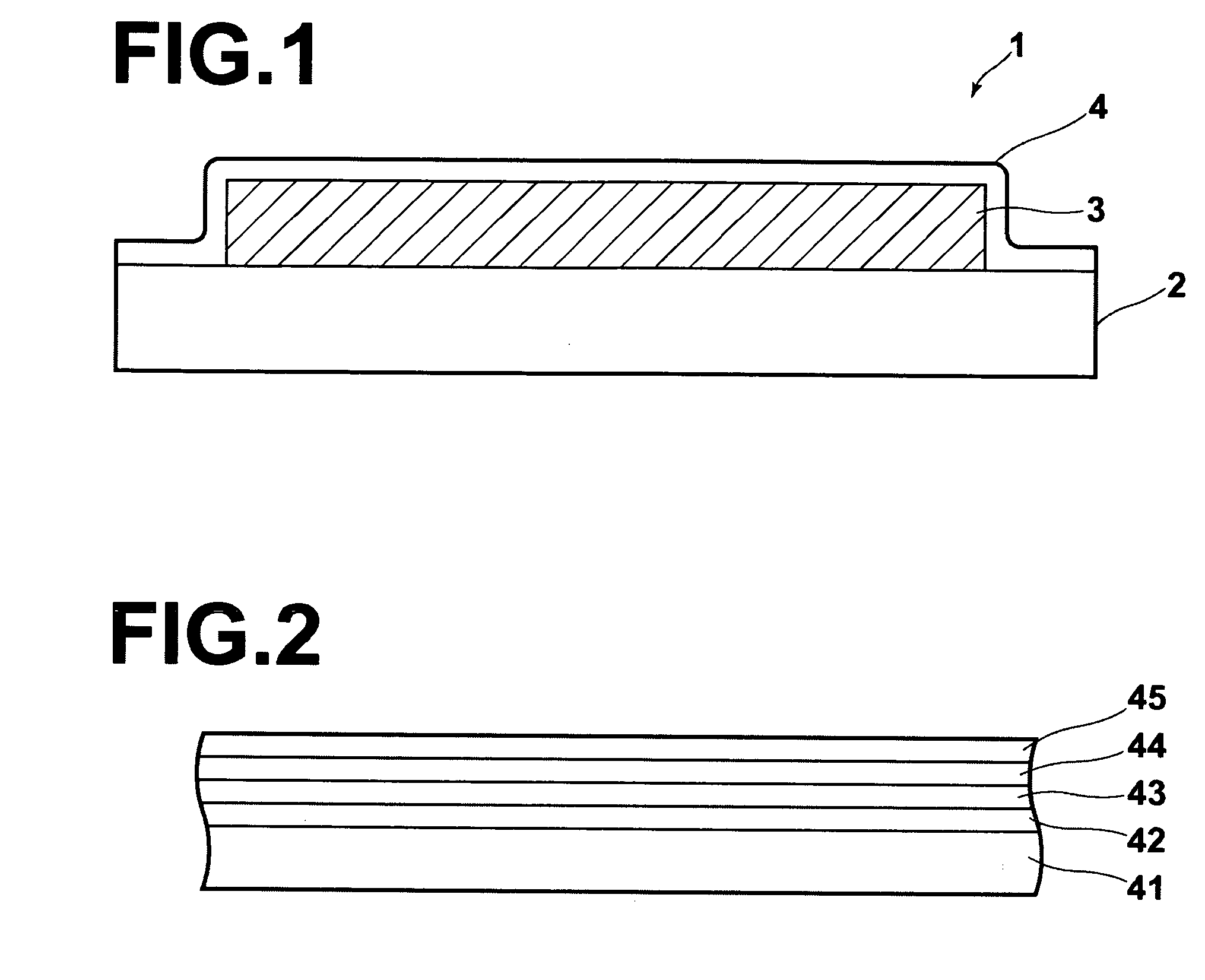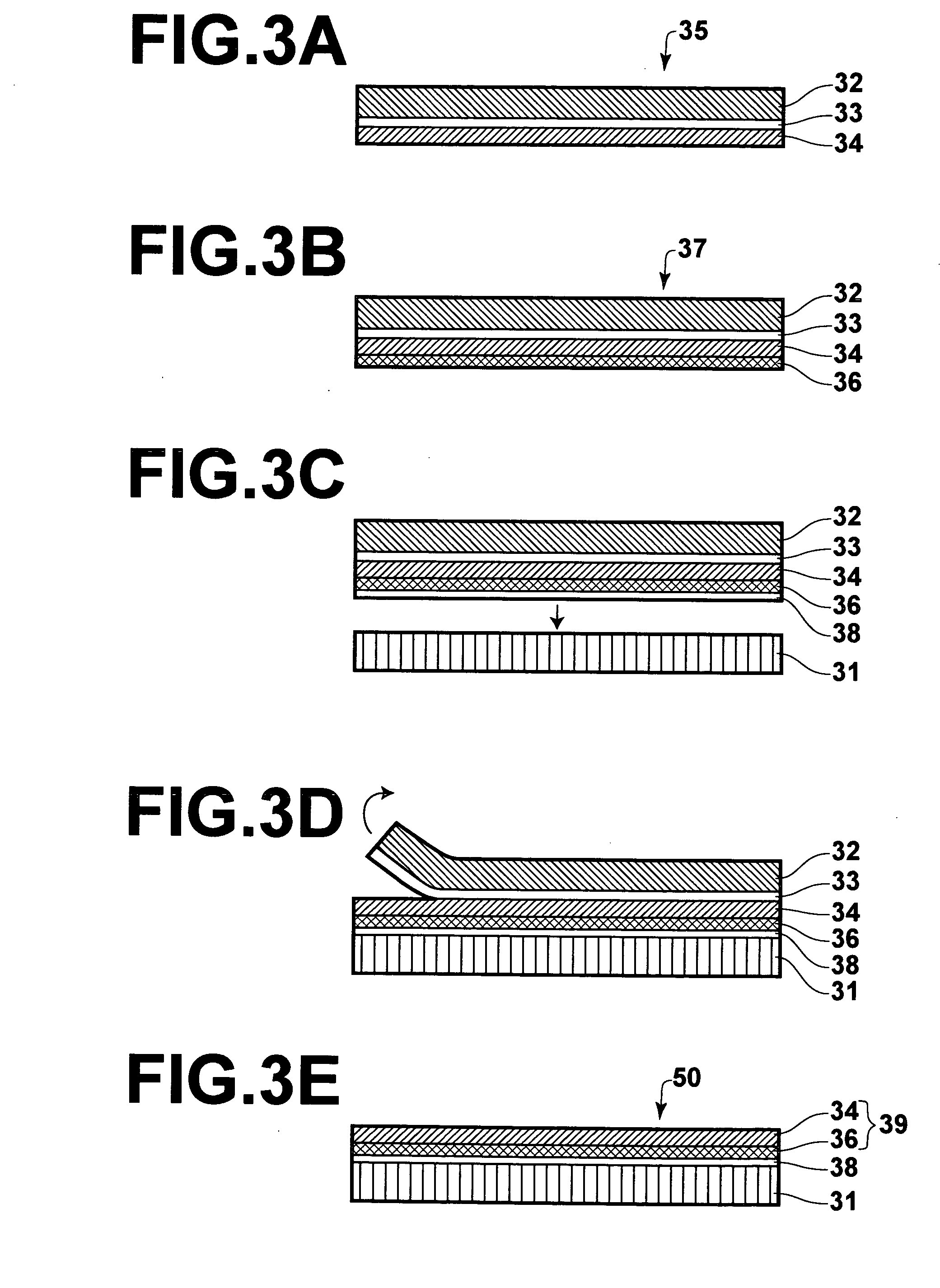Radiation-image conversion panel and process of producing the same
a radiation-image conversion and radiation-image technology, applied in the direction of optical radiation measurement, fluorescence/phosphorescence, instruments, etc., can solve the problems of deteriorating image quality, interference fringes or imperfections in the radiographic image, distortion or wrinkles in the protective layer, etc., to achieve satisfactory image quality, high degree of sensitiveness, and practical life
- Summary
- Abstract
- Description
- Claims
- Application Information
AI Technical Summary
Benefits of technology
Problems solved by technology
Method used
Image
Examples
first embodiment
EXAMPLES OF THE PRESENT INVENTION
example 1
[0086] (1) Formation of Fluorescent Layer
[0087] As the evaporation sources, a powder of cesium bromide (CsBr) with the purity of 4N or higher and a powder of europium bromide (EuBr2) with the purity of 3N or higher are prepared, and minor elements in each of the above powders are analyzed by the inductively coupled plasma mass spectrometry (ICP-MS). The result of the analysis shows that in CsBr, the content of each of alkali metal elements (Li, Na, K, and Rb) other than Cs is 10 ppm or less, and the content of each of the other elements including alkaline-earth metal elements (Mg, Ca, Sr, and Ba) is 2 ppm or less. In addition, in EuBr2, the content of each of the rare-earth elements other than Eu is 20 ppm, and the content of each of the other elements is 10 ppm or less. Since the above powders are highly hygroscopic, these powders are stored in a desiccator in which a dry atmosphere having a dew point of −20° C. or lower is maintained, and each powder is taken out immediately befo...
example 2
[0092] The radiation-image conversion panel as the example 2 is different from the radiation-image conversion panel as the example 1 only in the manner of fixing the protective sheet to the stimulable-phosphor layer. That is, in the process of forming the protective layer in the example 2, the protective sheet is fixed to the upper surface and side surfaces of the stimulable-phosphor layer by vacuum sealing (i.e., forming an opening at an end of the protective sheet for evacuation, attaching the protective sheet to the stimulable-phosphor layer, performing evacuation through the opening, and closing the opening with a stopper so as to seal the stimulable-phosphor layer in the protective sheet.
PUM
 Login to View More
Login to View More Abstract
Description
Claims
Application Information
 Login to View More
Login to View More - R&D
- Intellectual Property
- Life Sciences
- Materials
- Tech Scout
- Unparalleled Data Quality
- Higher Quality Content
- 60% Fewer Hallucinations
Browse by: Latest US Patents, China's latest patents, Technical Efficacy Thesaurus, Application Domain, Technology Topic, Popular Technical Reports.
© 2025 PatSnap. All rights reserved.Legal|Privacy policy|Modern Slavery Act Transparency Statement|Sitemap|About US| Contact US: help@patsnap.com



